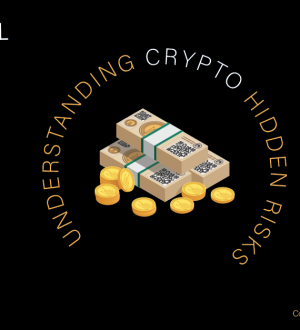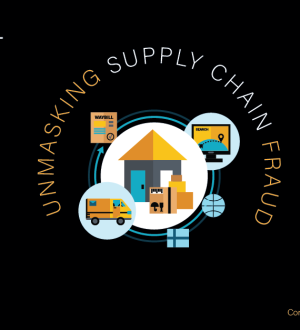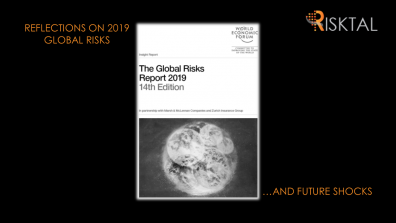
Reflections on 2019 Global Risks
...And Future Shocks
It was customary for us to analyze the annual Global Risk Report “the Report” published by the World Economic Forum in January. However, this year we decided to take a different view by reflecting on the actual events that occurred during this year and compare those to the risk outlook that was set for 2019 in the report at the beginning of this year.
Another aspect that drew our attention in the report was a section titled “Future Shocks”. This section included 10 rather speculative risks that would trigger a thought process about their likelihood to materialize, how soon and their consequence. We decided to briefly touch on these as well in this article.
Please note that this article is not intended to replace or summarize the report; our objective is to provide our insights and reflections on how we see Global Risks in light of the current events, as we believe that any risk assessment/risk management initiative in organizations, is incomplete and somewhat irrelevant if it fails to take Global/Regional/Domestic “Macro-Risks” into consideration.
TOP RISKS 2019
We started by analyzing the top 10 risks in terms of likelihood of occurrence and impact as highlighted in the report and drew a simple comparison to identify which have the highest severity (high likelihood and high impact) as depicted in the illustration below:
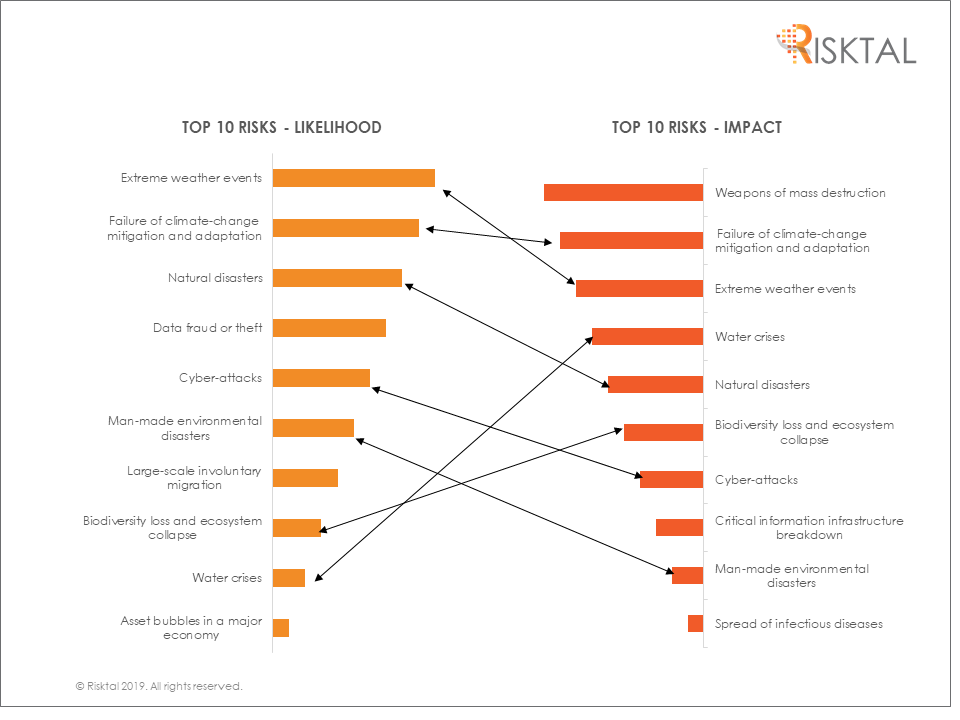
It is clear in this report that Environmental risks were assessed to be the most severe with a sweeping 50% of the top 10 risks in both impact and likelihood mainly in relation to extreme weather conditions, natural disasters, failure of climate change mitigation and man-made environmental disasters.
What was peculiar to us reviewing this report is the fact that only ONE Economic risk reached the top 10 and only in the likelihood assessment, which was “Asset bubbles in a major economy”. Yet when reflecting on 2019’s events, we can safely say, it was a year of economic wars, economic slow down in the majority of Global economies with shadows of recession.
The tariff war between USA and China, the increased sanctions on different countries, withholding and redirection of funding have had significant implications on the global economy; and in particular the Middle East and GCC.
Technological risks in our view, such as “Cyber attacks”, “Data fraud or theft” and “Critical information infrastructure breakdowns” deserve to be on the radar as these risks could lead to catastrophic consequences, from compromising the integrity of democratic elections and influencing extreme world leadership to corporate fraud and embezzlement.
Some risks that we would have expected to see of high severity in this space that have had their toll on 2019 are:
- Social media and fake information (news) risks;
- Privacy and trade secrets breaches;
- Tech companies wars and their control of public information;
- New technology e.g. block-chain.
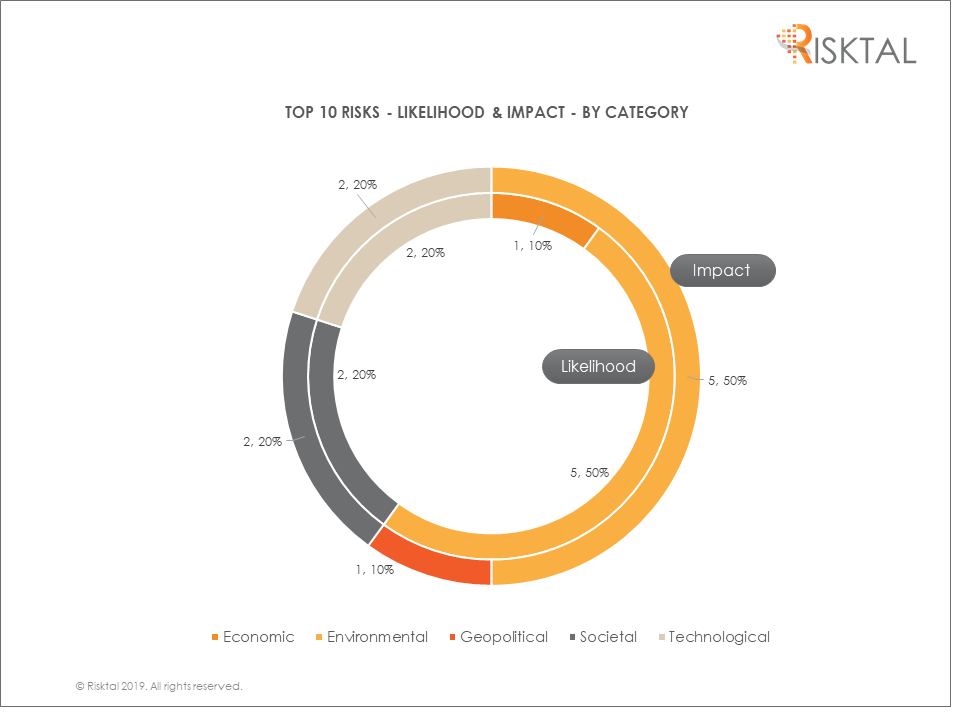
It was also intriguing to see Geopolitical risks only appearing in the top 10 from an impact perspective as the risk of “weapons of mass destruction”; while 2019 has witnessed notable Geopolitical instability globally; wars in Syria, Iraq, Libya & Yemen, tensions in the GCC, demonstrations in Hong Kong, Iraq, Iran, Middle East, France. Also the turmoil with Brexit and the instability in the UK and Europe that lead to devaluation of the GBP.
The political scene in the USA has also contributed to global unrest, triggered by the extreme bipartisanship and weakening governance of law, which also gave rise to right wing extremism and domestic conflicts. All of this and much more would have rendered a more severe presence of Geopolitical risks on the radar.
Societal risks have had a good share in the severity scale with “Water Crises” and “Large scale involuntary migration” which was evident in the refugee crises from war zones which also created risks of human trafficking and abuse.
OVERVIEW OF GLOBAL RISKS 2019
The report identified 30 risks under five key categories:
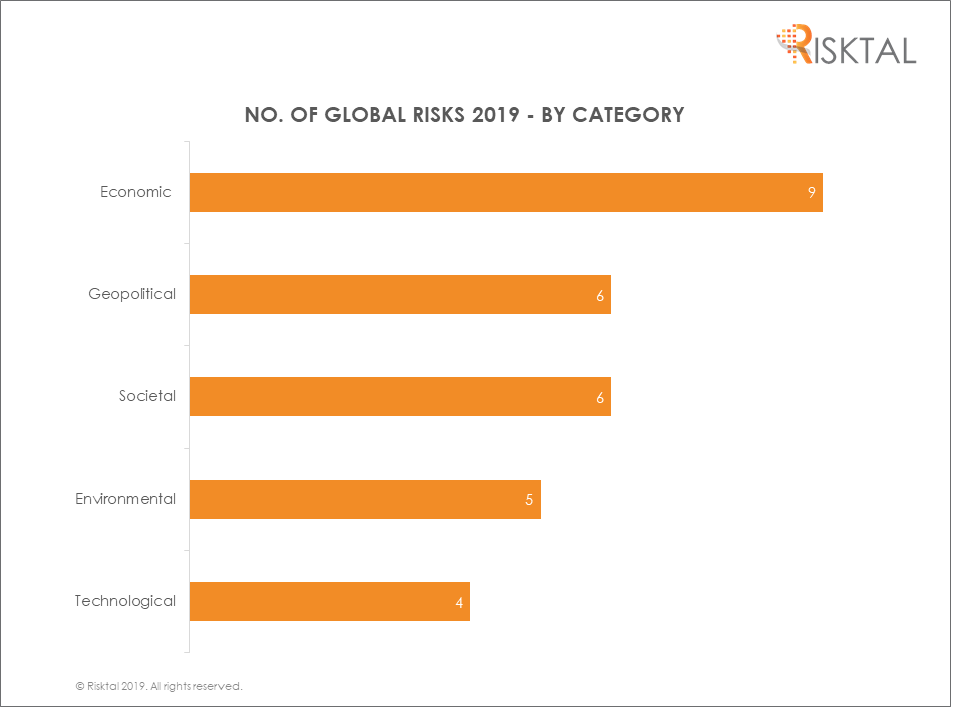
In addition to those, the report captured 42 short term risks that were identified by the surveyed population. We have attempted to categorize those under the five main categories to provide perspective to our readers, and incorporated those on the right side of the following illustrations.
Economic Risks
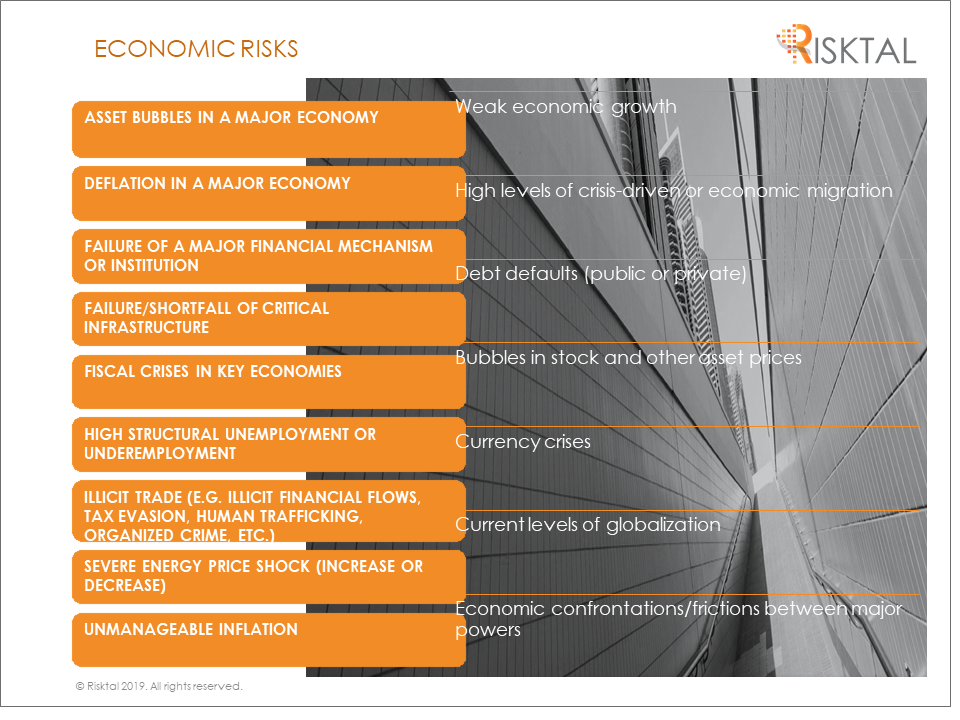
Geopolitical Risks
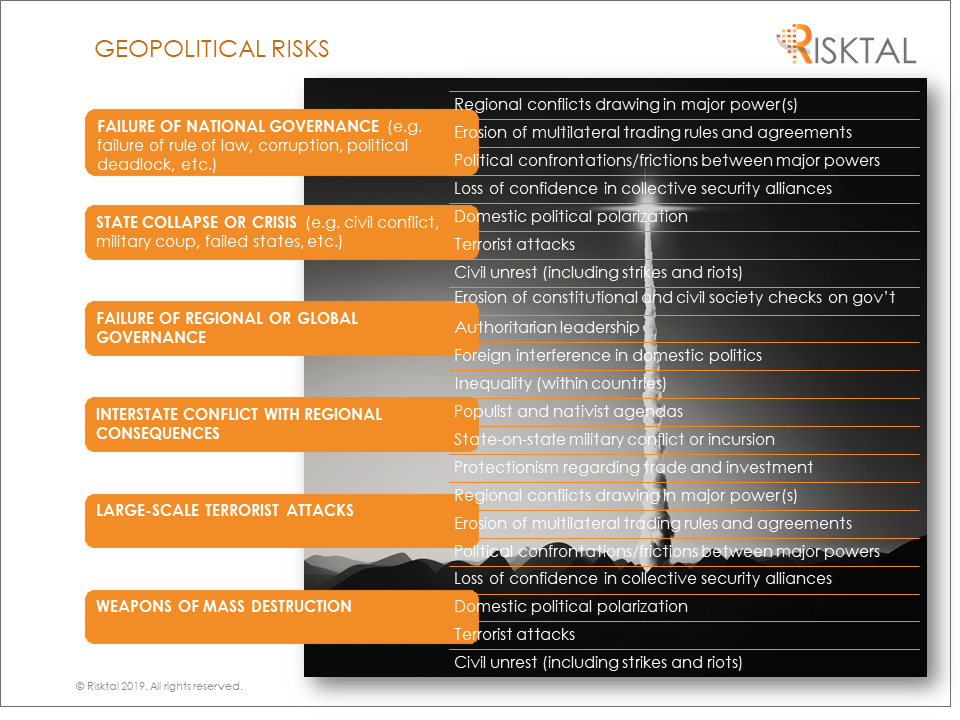
Societal Risks

Environmental Risks
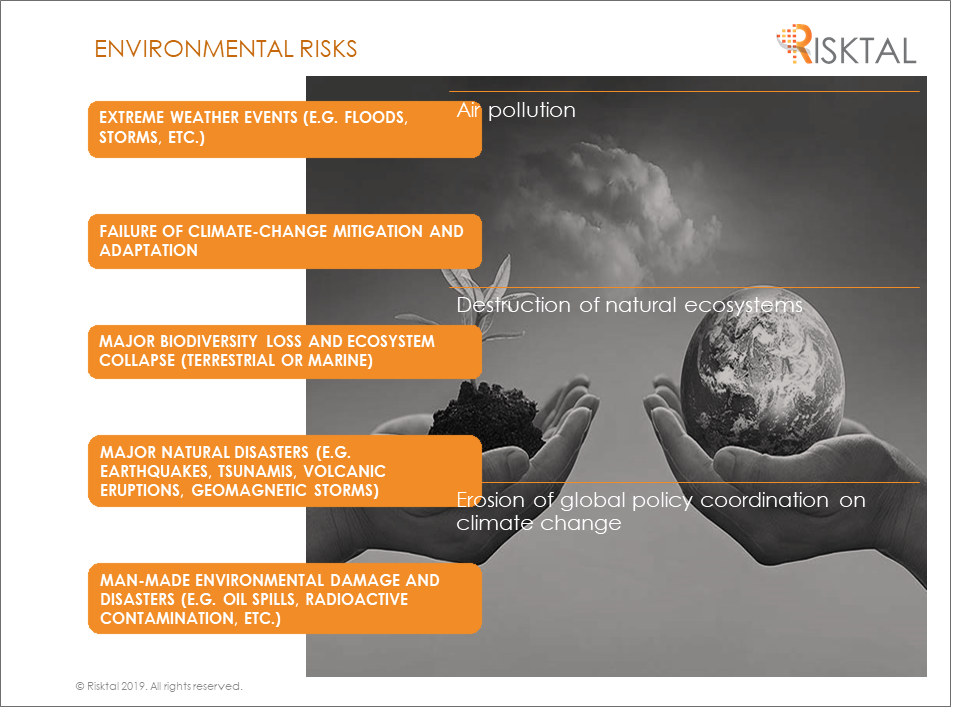
Technological Risks
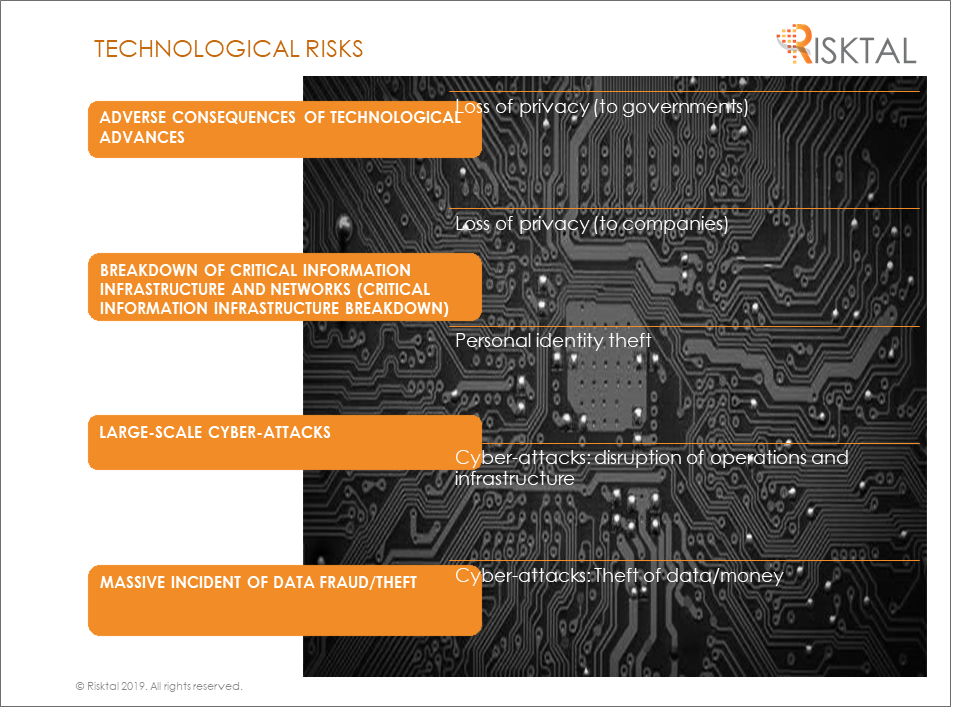
FUTURE SHOCKS
This section of the report was very interesting despite being speculative, but for sure it has triggered the thought process about some upcoming risks.
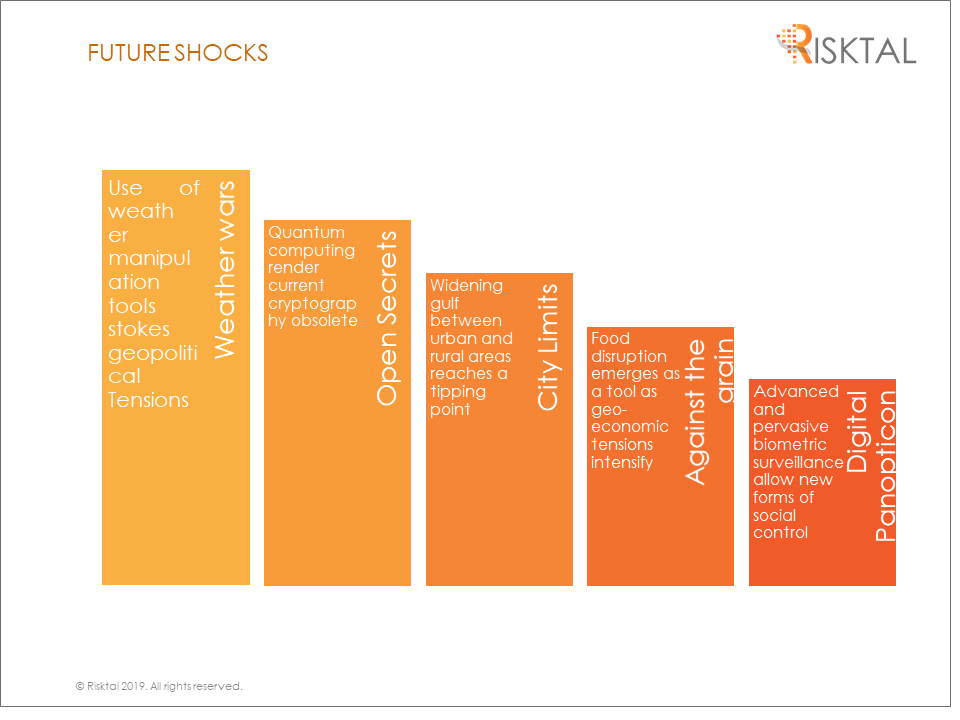
In UAE we have progressively been experiencing the results of cloud seeding; however, not until we came across this report’s perspective on this practice that we saw a different dimension where this practice could stroke geopolitical tensions – what was defined as “Weather Wars”.
Some Environmentalists have a view that the more human intervention with nature could lead to further messing up its equilibrium, which is evident in the risk of climate change which is primarily driven by human intervention. Accordingly, there might be further environmental consequences to such practices in addition to the geopolitical ones.
Technological risks are high on the global risk radar as demonstrated earlier in this article; yet the “Open Secrets” shock, adds a more intriguing risk and somewhat devastating risk of obsolescence of the current cryptography as we know it with the maturity of quantum computing, exposing key organizations and individuals to significant breaches of information and privacy.
“City Limits”, the increased migration from rural to urban areas is creating a rift and rivalry within nations, that could eventually lead to violent clashes and pave ways for separatism in nations.
Not too dissimilar to “Weather Wars”, “Against the grain” tackles the issue of food supply or lack of it, as a trigger of geopolitical tensions. We have witnessed in 2018/2019 intensified trade wars between USA and China, and the consequent tariffs on agricultural products, among others. Such policies and other risk factors e.g. climate change and its impact on food supply to lead to catastrophic results if not addressed swiftly.
Before we get into the “Digital Panopticon”, let us start by understanding what a Panopticon is!
“The panopticon is a disciplinary concept brought to life in the form of a central observation tower placed within a circle of prison cells. From the tower, a guard can see every cell and inmate but the inmates can’t see into the tower. Prisoners will never know whether or not they are being watched”.
The advancement of technology in the fields of machine learning and Artificial Intelligence is exposing us to the risks of intrusive monitoring, breaches of privacy and eventually freedom. The ultimate risk is for machine to reach the point of singularity and take over!
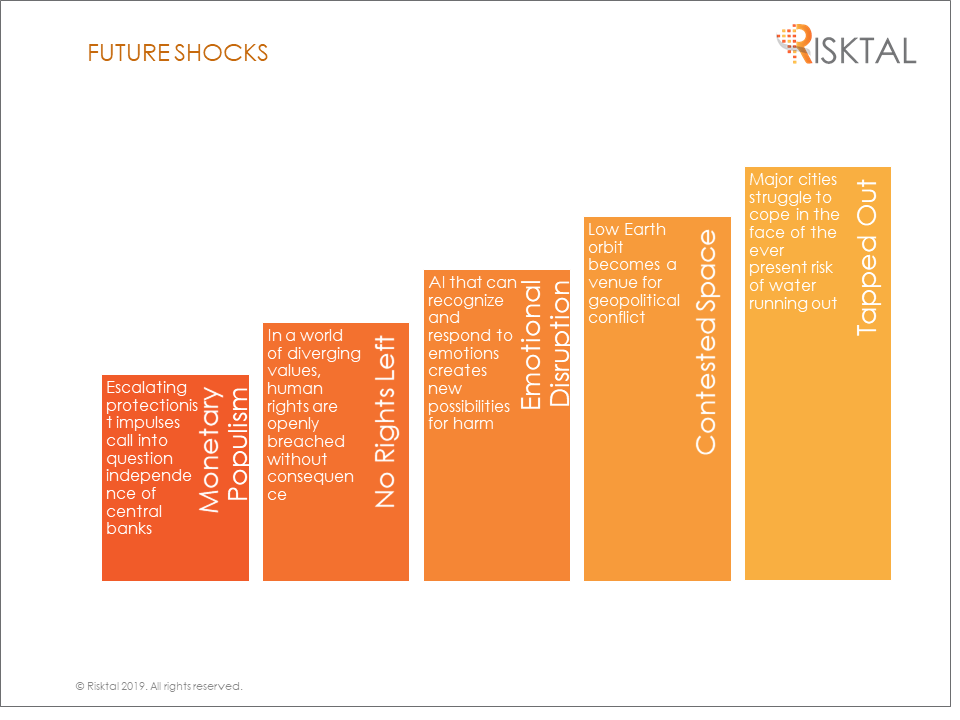
“Tapped Out” – running out of water supply! enough said!
“Contested Space” – this shocker alludes to the risk of “Space Wars” where progressively communication, surveillance, military activities are controlled by satellites, which might take the war to Earth’s orbit.
“Emotional Disruption” as AI evolution to identify and predict human emotions could lead to the point of singularity of the machine!
“No Rights”, human rights breaches without consequence is not a shocker anymore, neither is it a risk as it is fact that we witness on a daily basis.
“Monetary Populism” where the independence of central banks is questioned and the monetary policy is used as a tool in interstate wars or domestic rivalries.
BOTTOM LINE
In this article we reflected on the global risks identified by the World Economic Forum for 2019 in light of this year’s events. Similar to any risk report, a fraction of the battle is to identify and assess the risks, where the bulk of the work remains in addressing those risks before they effectively materialize.
In our opinion, the Global Risk Report is a very useful tool and addresses many important issues. However, some of these risks have already materialized and have become current issues rather uncertain events.
It is imperative for risk professionals to take global, regional and domestic macro-risks into consideration when conducting any risk assessment or management exercises.
At Risktal we believe in a holistic approach to Risk Management and continue to add value to our clients by applying that approach which results in a relevant, comprehensive and specific risk profile of their organizations that would allow them to make informed decisions and calculated actions to achieve their strategic objectives.




